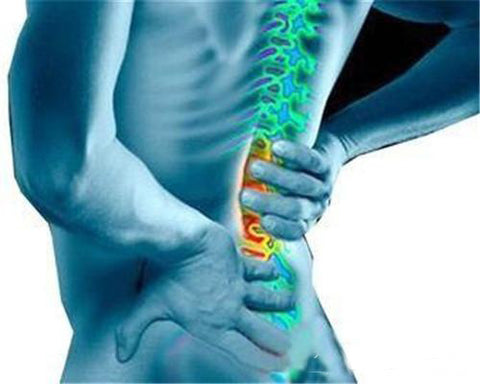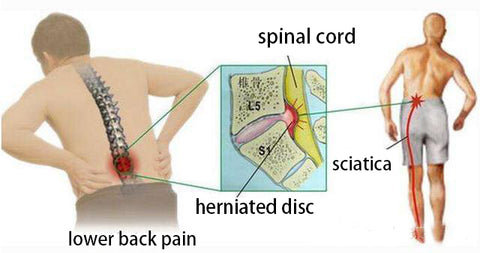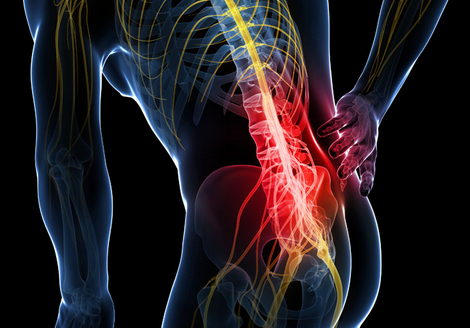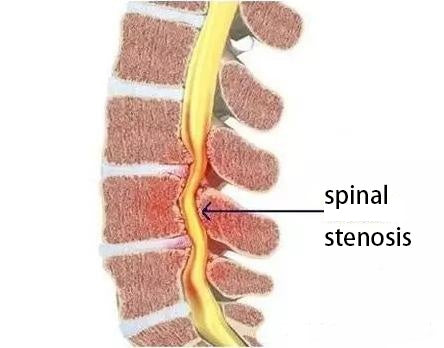What is the cause of lower back pain?

Many people ask themselves what is the reason for the frequent pain in the lower back?
Generally, lower back pain is considered in several aspects, one is age and the other is gender. Next, we will analyze it in detail.
First, let's start with age. Middle-aged and elderly people often suffer from lower back pain, and symptoms such as lumbar muscle strain, lumbar disc herniation, and spinal stenosis are often considered. In addition, kidney diseases, such as kidney stones and radioactive pain, are also considered. Children with lower back pain generally consider organic disease.
Start with gender. In addition to lumbar muscle strain and intervertebral disc herniation, women often have pain in the lower back, but also gynecological diseases such as pelvic inflammatory disease.
Then let's find a few more common and typical reasons for analysis and identification:
1. Herniated lumbar intervertebral disc
As we grow older, the functions of various organs in the human body begin to weaken. Doctors call this change "degenerative change". Degeneration in the lumbar region manifests as rupture of the annulus fibrosus on the posterior side of the lumbar intervertebral disc, and each intervertebral disc protrudes (bulges, protrudes) from the ruptured annulus fibrosus. Once the herniated disc compresses the cauda equina or surrounding spinal nerves, low back pain and other symptoms may occur. More than 97% of lumbar disc herniation occurs in the two parts of "lumbar 4-5" and "lumbar 5-sacral 1". In clinical treatment, the male to female ratio of this symptom is 3:1, concentrated in the 20-40 age group.
Occupations with high incidence are mostly teachers and civil servants who sit for a long time.
The typical symptom of lumbar disc herniation is radiating pain, which is transmitted from the waist to the buttocks, legs and feet, feeling like "string electricity". Some patients may also experience numbness in the lower limbs or perineum. Patients with a long course of disease will experience atrophy of the waist, buttocks or leg muscles, and some patients will experience urinary incontinence, which may lead to paralysis in severe cases. If the above symptoms appear, seek medical attention in time.
Patients with mild conditions can choose drug therapy (painkillers, dehydrating agents, hormones, neurotrophic drugs, etc.); traction therapy (using pelvic traction can increase the width of the intervertebral space, reduce the internal pressure of the intervertebral disc, return the herniated part of the intervertebral disc, and relieve the pain). Stimulation and compression of the nerve root, the treatment needs to be carried out under the guidance of a professional doctor). Severe cases require surgery.


2. Lumbar muscle strain
Lumbar muscle strain is a chronic pathological change of soft tissue in the lumbar region, which is
a common clinical low back pain disease. If the psoas muscles are under stress for a long time, such as bending over for a long time, the waist is repeatedly injured. In addition, being in a cold or humid environment for a long time is also prone to lumbar muscle strain. This symptom is common in people who work for a long time or do high-intensity exercise.
When a lumbar muscle strain occurs, the patient will experience persistent and widespread low back pain, inconvenient activities, aggravated pain after exertion, and pain relief after rest.
When lumbar muscle strain is found, it can be treated with medication, massage, physical therapy, exercise therapy, muscle training, combined with medication, which can significantly relieve symptoms. At the same time, try to avoid improper waist posture for a long time in life.

3. Lumbar spinal stenosis
Lumbar spinal stenosis is a clinical syndrome, which is generally considered to refer to any cause (congenital spinal stenosis, facet joint hypertrophy, intervertebral disc herniation, spondylolisthesis, etc.) Any form of stenosis of the spinal canal, nerve root canal and intervertebral foramen can cause cauda equina compression, symptoms and signs of nerve root compression, low back pain, intermittent claudication, etc.
In terms of treatment, mild cases can adopt non-surgical methods. Take proper rest and pay attention to the softness and hardness of the bed to moderately relieve lumbar muscle spasm. Massage physical therapy can promote blood circulation and remove blood stasis, and relieve symptoms. For drug treatment, integrated traditional Chinese and Western medicine can be adopted; for severe symptoms, surgical treatment should be adopted.



